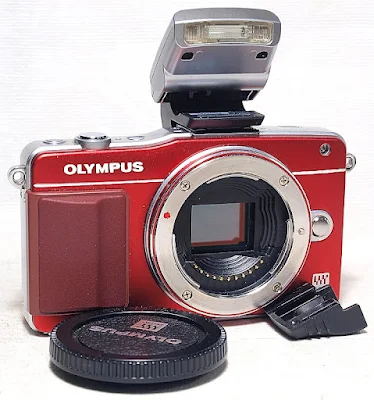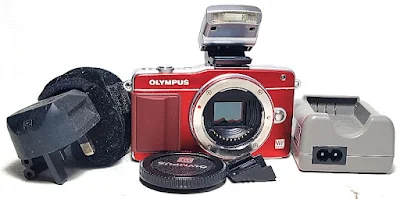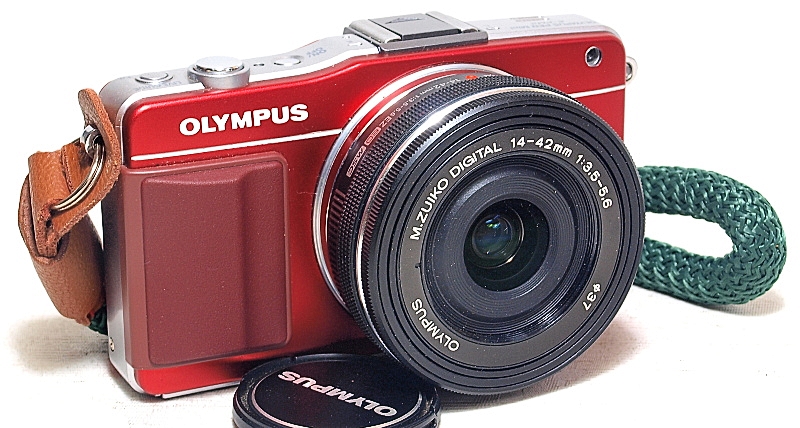Within the massive resurgence of film photography, with the increasingly high cost of film, spartan sources for services and repairs, and at the opposite end, the ever-spiraling cost of their digital SLR counterparts, with camera models that are becoming too complex and uneasy to handle, one recourse for the budding photographer or the new enthusiast in photography to look at is the vintage digital camera genre.
While the "vintage" genre may not be agreeable to a few, this is the category where digital cameras that were produced 10 years or more ago, are now out of production, discontinued, or built with technologies that have been bypassed, can be broadly placed in. The once popular compact digital cameras, now squeezed out of the market by the tsunami of super smartphones, are equally placeable here.
What's available then? Plenty. A whole world of choices is available, and more. Skip the thought of having to go out to buy film, having them processed by the lab (or yourself) and the negatives (or positive slides) scanned into digital images, skip the idea of having to scrimp and save, and zero into the idea that you already have the correct USB cable for charging the battery and for transferring the images from your camera to the desk= or laptop, and you are all set.
Olympus PEN mini e-pm2 - Which? first look
The olympus e-pm2 is the latest upgrade from the e-pm1. In this video we take a look at the new features they've put on the new camera.
While I put my interest in film photography on hold, more likely a spanner in the works, I followed the same path here. I ended up with a mini lightweight Olympus Pen E-PM2, launched in 2012, an entry-level Micro Four Thirds system camera with a reportedly excellent 16MP CMOS sensor (the same one that Olympus uses in the OM-D) and is capable of doing up to 8 frames per second continuous shooting if that means anything to me currently.
Olympus E-PM2
The Olympus Pen E-PM1, when launched in 2011, had the smallest and lightest footprint of any Olympus ILC and came with a body weight of only 269 grams. The model was upgraded to the E-PM2 in 2013, with updates to a 3.0-inch touch screen, two additional buttons, and a small built-in grip on the front panel. The camera carries a 16MP CMOS sensor, the same as found on the E-PL5 and OM-D E-M5. The sensor, accolades as a class leader in image quality, was coupled to a TruePic VI image processor. Body colors available were Black, Red, Silver, and White.
The E-PM2 is powered by a rechargeable BLS-5 lithium-ion battery, rated at 360 shots per charge, and comes with an FL-LM1 clip-on flash unit. Shooting at a fast rate of 8fps continuous is possible, and the enthusiast also has access to 12 (twelve) Art Filters available on the camera. ISO Auto range is from 200 to 1600 or preset to 100, 200, 400, 800, 1600, 3200, 6400, 12800, 16000, 20000, and 25600.
File formats are RAW, JPEG, RAW+JPEG, and MPO (3D still). Exposure modes selectable are I Auto, Program AE, Aperture Priority, Shutter Priority, Manual, Bulb, Time, Scene Select AE, Art Filter, and Underwater. Scene modes are Portrait, e-Portrait, Landscape, Landscape + Portrait, Sport, Night, Night + Portrait, Children, High Key, Low Key, DIS mode, Macro, Nature Macro, Candle, Sunset, Documents, Panorama, Fireworks, Beach & Snow, Fisheye Conv., Wide Conv., Macro Conv., and 3D.
Reviews and technical information on the E-PM2 are easily available on the Net. This one is from imaging-resources.com.
To download the Instruction Manual for the E-PM2, go to olympus.imaging.jp.
M.Zuiko Digital 14-42mm 1:3.5~5.6 EZ
Accoladed as the best pancake lens ever by a photo review site, the M.Zuiko Digital 14-42mm 1:3.5~5.6 EZ is equivalent to a 28-82mm lens on a 35mm full-frame camera. It is a very versatile lens, an all-rounder with a zoom range good for telling a story of a subject you are in, to capturing portraits, group portraiture, landscape, and whatever you have in mind.
The 8 elements in 5 groups (with 1 Super HR, 1 ED, and 3 aspherical elements) lens has a 5-blade diaphragm, a minimum focusing distance of 0.2 meters at 14mm, and 0.25 meters at 42mm, a minimum aperture of f/16, takes 37mm filters and weighs 93 grams. The lens is an electronic zoom with a lens retraction mechanism that extends automatically to the 14mm setting when the camera is powered on, and back to its rest position when it is powered off. The lens measures 60.6mm when extended, and 22.5mm when retracted.
Early Images
I acquired the E-PM2 body kit, which came with a battery, charger, body cap, hot shoe cover, flash with a pouch, and a shutter count of less than 100, for just above US $80. I had the battery charged, installed an SD card which I already have, mounted the M.Zuiko Digital 14-42mm 1:3.5~5.6 EZ lens that I already have, attached a green yarn hand strap to the body, and was out of the door for these early images.
Without the aid of a dial to assist you with in-camera settings, using the E-PM2 is akin to going back to the days of a simple point-and-shoot, with the P mode, or after you have preset the camera to the setting you want to shoot in other modes.
Changing the mode setting on the camera is a sequence of pressing the menu button, picking the item you want to set from the touch-screen LCD, and using the up, down, left, or right arrow points on the control wheel to navigate to the control level you are after.
It does take quite a while, though, to achieve competency with what you are doing. Take your time, and do it well.
Impression
Wow, what an impression. The E-PM2, introduced to appeal to point-and-shoot owners wanting an upgrade that wouldn't weigh them down, has me going as a grade up from my point-and-shoot film photography days. Without any control dials, though, the camera is still a preset system, with settings that are activated manually, and deactivated after use, manageable via the LCD touch screen.
For experienced shooters looking for a decent small camera as a second body, an EVF (electronic viewfinder) might just be the right option to look at.
A Note on Model Continuity
Although Olympus continued with the development of the compact-bodied E-PL (from the E-PL1 in 2010 to the E-PL10 in 2020) and the E-P (from the E-P1 in 2009 to the E-P7 in 2021) series, with a Pen F thrown in between them in 2016, the E-PM series, on the other hand, ended with the launch of the E-PM2. There was no foreseeable replacement.
Of late, of course (2021), we know that Olympus has transferred its imaging division to OM Digital Solutions, the subsidiary of Japan Industrial Partners Inc. (JIP) that now controls the Zuiko and OM brands.






























No comments:
Post a Comment